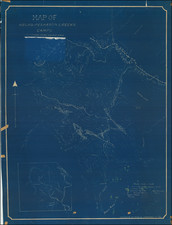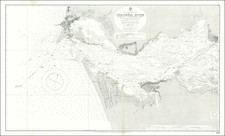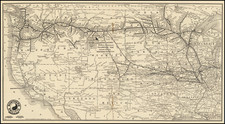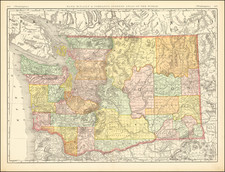The Wenatchee National Forest: A Forestry Perspective
The Wenatchee National Forest, sprawling majestically across central Washington is meticulously depicted by this Forest Service map, prepared under the direction of W.B. Greeley. Filled with natural landmarks, intricate trails, and budding infrastructures, this verdant expanse is a testament to America's dedication to preserving its wilderness even as modernity approached.
Focal Points:
Mountains: The Cascade Range, of which the forest is a part, boasts several prominent mountains, like Mount Stuart, which dominates the skyline.
Passes: Important travel routes like Stevens Pass and Blewett Pass are major connectors, providing access through the rugged terrain.
Ridges: Ridges such as Teanaway Ridge and Chiwaukum Ridge were depicted as defining topographic features.
Roads and Trails: The forest's complex network of roads and trails, such as the Pacific Crest Trail, showcased the area's accessibility and recreational potential.
Rivers, Canyons, and Creeks: The Wenatchee River, running through Tumwater Canyon, was a major watercourse. Many creeks, like Icicle Creek, added to the region's intricate water system.
Lakes: Alpine lakes, like Lake Wenatchee and Colchuck Lake, were popular spots for recreation and relaxation.
Infrastructure: Corrals for managing livestock, lookout posts like the First Creek Fire Lookout for monitoring wildfires, mills processing timber, post offices connecting remote communities, and the encroachment of railroad lines symbolized the balance of nature and development.
Historical and Commercial Context:
The region's history is rich, with Indigenous peoples like the Yakama and Wenatchi tribes having lived in the area for thousands of years. European settlers in the late 19th century brought change, leading to the establishment of the town of Wenatchee, named after the Wenatchi tribe, by the confluence of the Wenatchee and Columbia rivers.
The Wenatchee National Forest was officially created in 1908, during the nationwide push to preserve and manage forest lands for sustainable use. This forest conservation movement, championed by leaders like Gifford Pinchot and President Theodore Roosevelt, recognized the importance of forests for timber, water resources, and recreation.
The town of Wenatchee grew in prominence due to its strategic location along the Columbia River and the Great Northern Railway line. It became a hub for the timber industry, with mills processing the vast lumber resources of the forest. However, the early 20th century saw a shift towards sustainable forest management, driven by concerns about over-harvesting and the devastating 1910 fires in the region.









![Map of Oregon Territory. By Samuel Parker. 1838. [with:] Journal of an Exploring Tour Beyond the Rocky Mountains, under the direction of the A. B. C. F. M. 1840.](https://storage.googleapis.com/raremaps/img/small/97939.jpg)

![[ Whidby Island, Washington ] Penn Cove Park: your homesite on Whidby Island. . . [with five printed photos of Whidby Island streets including four aerial shots].](https://storage.googleapis.com/raremaps/img/small/98838.jpg)


